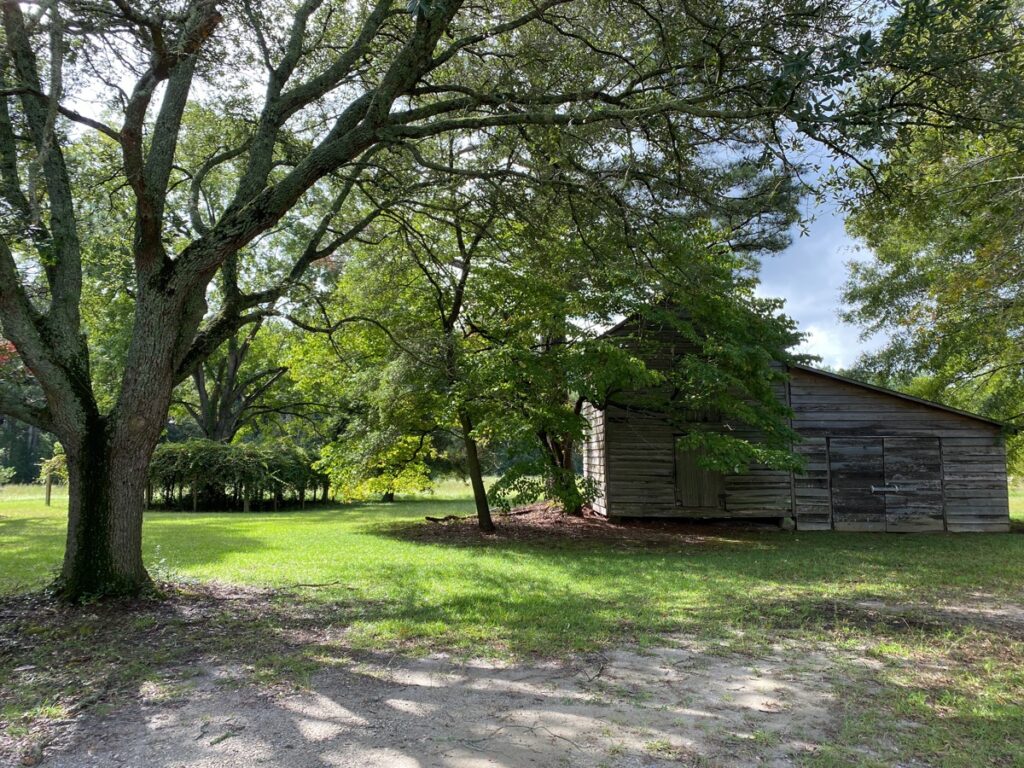By Olivia Garcia, Communications Manager
In November 2024, Triangle Land Conservancy partnered with the Hedges family to conserve 64 acres of historic farmland in Johnston County known as the Hedges Farm. This donated working lands conservation easement will protect vital farmland, forest, water resources, and natural habitats along Middle Creek. The conservation of this land builds on a previous partnership with the Cullman/Hedges family from 2016 when they donated a conservation easement on an adjacent 75-acre forest in honor of a family matriarch and her love for the land and Johnston County
Honoring a family legacy through conservation

TLC’s collaboration with Hugh Cullman began with the desire to honor the memory and legacy of his wife, Nan Ogburn Cullman. In the Spring 2016 edition of TLC’s Conservation Connections newsletter, daughter Kate Hedges shared the story of her mother’s farm and how her mother was “increasingly protective of her land as she saw the inevitable impacts of change and development.”
Hugh Cullman has since passed, but his and Nan’s legacy continues to live on through the permanent protection of the Nan Ogburn Forest along Middle Creek. This year the family protected an additional connecting 64 acres, which contains a mixture of hardwood forest, shortleaf pines, fields, and a beautiful old farmhouse and barns.
Much of the Hedges Farm is also prime farmland or farmland of statewide importance, with soil that is considered the best for productive agriculture – critical in a county that ranks in the top 20 in the nation for greatest farmland under threat to development.
“In conserving this farm, we save an important part of our family’s story, but also the story of Johnston County,” said landowner Kate Hedges. “Being part of a growing conservation effort ensures that our children and their children have stories that include farms that grow our food, help clean our air and water, and sustain our families.”
Preserving Middle Creek
Middle Creek has long been a priority area for TLC’s drinking water and natural habitats protection work. Water from Middle Creek eventually flows into the Neuse River, providing drinking water for downstream communities. Conserving land around a water source helps to preserve the health of streams that eventually flow into larger river systems, as these smaller streams and habitats work to filter sediment and pollution, as well as help hold excess water to reduce flooding.

Beyond protecting clean water and farmland, this property also supports several threatened and endangered species with a diversity of habitats suitable for many aquatic species. Middle Creek is known to be home to the Neuse River waterdog, one of the rarest salamanders in the Southeast. These salamanders, also known as the Carolina Mudpuppy, are found in only one place in the world – in the Neuse and Tar-Pamlico River basins of North Carolina.
In addition to the Neuse River waterdog, this stretch of Middle Creek also supports several federally threatened or endangered freshwater mussels including the Dwarf Wedgemussel, Yellow Lance, and the Atlantic Pigtoe.
Habitats and water for today and tomorrow
Together with the Nan Ogburn Forest and another TLC conserved property on the other side of Middle Creek, this new Hedges Farm conservation easement creates 303 acres of connected protected land on both banks of Middle Creek. In the face of an ever growing and developing region, this is an incredible swath of land that will continue to support both wildlife and human communities for generations to come.
Community collaboration is essential to protecting land in the Triangle, and this conservation achievement was made possible thanks to the generosity and dedication of the Hedges family.
Going forward, TLC will monitor the conservation easement at least once a year in perpetuity to ensure that the land is truly protected. The land will continue to be privately owned as a residence and farm and is not open to the public.
“The protection of the Hedges Farm builds on two other recent TLC projects along Middle Creek, including the conservation of the Delbridge Farm in May, and the acquisition of a 37-acre wetland property in July” said TLC’s Senior Land Protection Manager East Brenna Thompson. “We are thrilled to be able to add to this network of conserved lands with the protection of the Hedges Farm and are immensely grateful to the family for this incredible conservation legacy.”
This corridor of conservation will forever remain to support clean water, protection of prime farmland soils, and to maintain space for critically endangered aquatic species.

